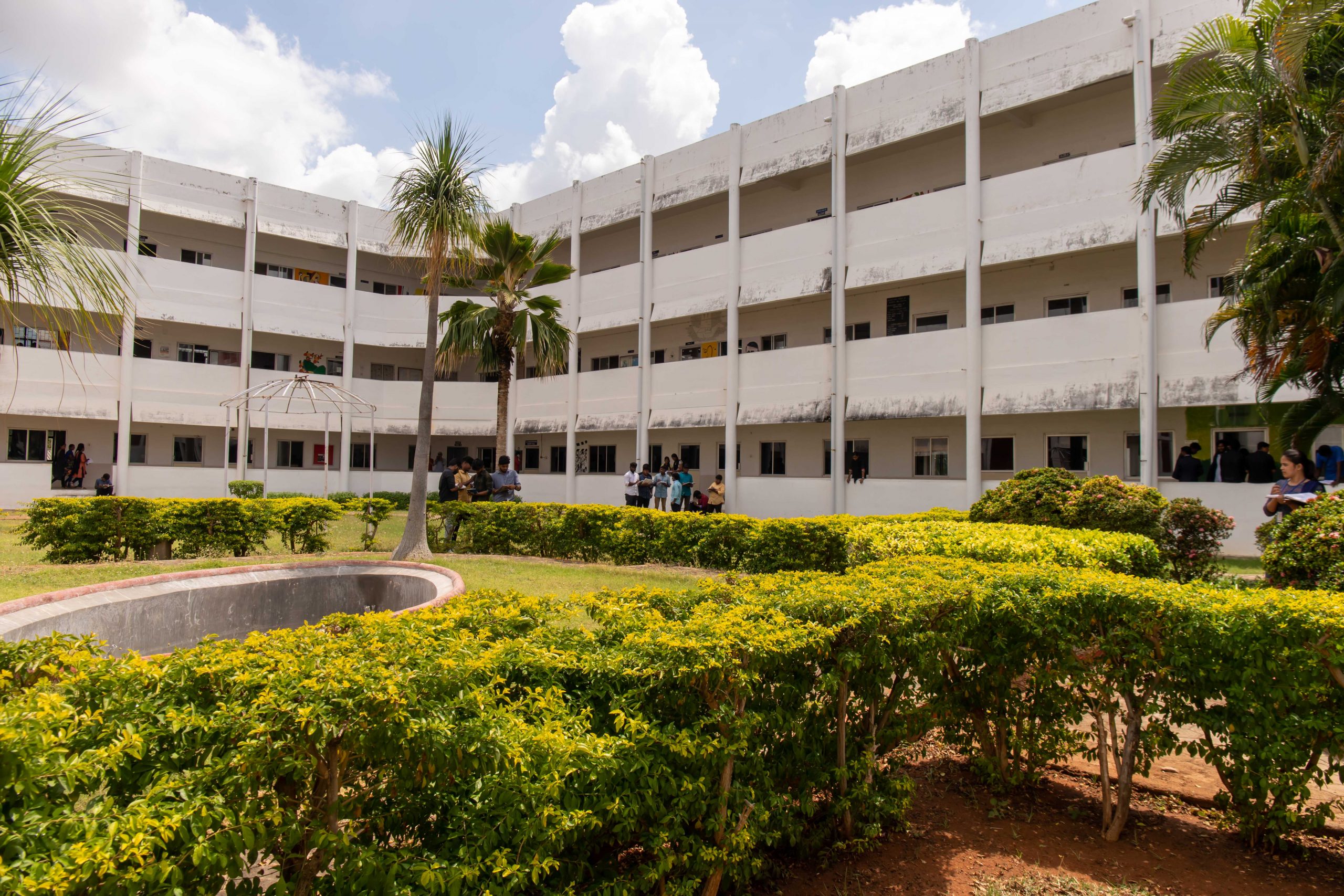
The Two-year (Full Time) Post-Graduate Program in Habitat Design commenced in 2015, M.Arch at
Kalasalingam School of Architecture is a two-year full-time Master of Architecture degree programme
(M.Arch.) on Habitat design.
The school has cutting-edge technology, including smart classrooms, designed learning areas, studios, and
a library. Our Kalasalingam School of Architecture is led by renowned veterans of architectural
architecture education.
The team consists of seasoned academics with global and national experience. We offer promising up-to-
date information and visibility that the booming artistic industry needs. This course includes hands-on
experience, proven design studio practice, and standard classroom instruction.
The programme is structured across four semesters to promote systematic learning across various
domains such as urban design, planning, transportation systems, ecology, infrastructure planning, and real
estate development through studio-based projects and supportive theory courses.

Accredited by NAAC ‘A’ grade. Approved by Council of Architecture (CoA). Ranked 4th in terms of UI GreenMetric Ranking.

Accredited by UGC, AICTE. Ranked 4th in terms of UI GreenMetric Ranking.

Kalasalingam University has joined hands with many corporate giants to groom their Architecture students better. Corporates keep hiring students from the talent pool of Kalasalingam University.

Kalasalingam University has always been able to keep their head high in the placement area by managing to place their students in the very reputed companies. Key Companies in the Architectural sector are involved in the placement drive conducted by the University.

Students in B.Arch. are offered to have hands-on knowledge along with theoretical knowledge. The faculty focuses on the perfect blend of research and practice in classroom teaching.
Habitat design involves a multidisciplinary process that considers various planning and design aspects,
community involvement, and addresses housing issues. It creates understanding of urban design,
planning, transportation systems, ecology, infrastructure planning, and real estate development. It inspires
focus on infrastructure management, biodiversity promotion, and the integration of green infrastructure.
Habitat designers employ smart technologies and digital tools for data-driven decision-making and urban
analysis. Through advanced education, habitat designers gain the information and skills needed to plan
people friendly, sustainable and meaningful cities.
| Course Name | Specialization | Eligibility Criteria |
|---|---|---|
| M.Arch | Architecture |
|
Selection will be done based on marks in
qualifying B.Arch exam.
| Course Name | Annual (INR) | One time admission Fees (INR) | Other Fee (INR) | Application Cost (INR) |
|---|---|---|---|---|
| M.Arch. | 70,000 | 10,000 | 200/ Subject | 600 |
| Course Name | Annual Tuition Fee (SARRC COUNTRY) | Annual Tuition Fee (NONSARRC COUNTRY) |
|---|---|---|
| M.Arch | $1000 | $2000 |
| CRL Rank In JEE (Mains) Paper-II | (Eligible for all 5 years) |
|---|---|
| 1-5000 | 75% |
| 5001-10000 | 50% |
| 10001-20000 | 25% |
| 20001-30000 | 10% |
| Percentage | Scholarship eligible for 4 years | Course |
|---|---|---|
| Above 80 % | 50 % | B.Tech – Aeronautical, Agriculture Engineering, ECE and B.Arch. |
| 70 -79.99 % | 40 % | B.Tech – Aeronautical, Agriculture Engineering, ECE and B.Arch. |
| 60 – 69.99 % | 25 % | B.Tech – Aeronautical, Agriculture Engineering, ECE and B.Arch. |
| Marks | Scholarship Eligible for 3 years |
|---|---|
| Above 80 % | 50 % |
| 70 –79.99 % | 25 % |
| 60 – 69.99 % | 10 % |














Currently pursuing my Master’s in Landscape Architecture at SPA, Vijayawada, Andhra Pradesh.
The undergraduate years provided a firm foundation for my knowledge in Architecture and kindled my curiosity in the field. During my bachelor’s, I also had an amazing opportunity to go for an exchange program in Cracow University of Technology, Poland. There I was able to explore a great deal of European Architecture and their techniques.
Ishwarya,
Batch 2014-2019

Currently pursuing Master’s in Building Engineering Management at Sathiyabama Institute of Technology, Chennai. Also working as an Editor for ASAP magazine.
Nivedha Babu,
Batch 2015-2020

Junior Architect – Roopmathi Anand Architects Nandanam, Chennai
Kalasalingam School of Architecture (KSOA) gives a great opportunity for students to broaden their knowledge beyond their field of studies within a multicultural environment. The friendly attitude of the professors and their willingness to always offer a helping hand has made me feel a part of the KSOA family. The 5 years spent here were splendid and has helped me to grow better professionally and personally.
Ar C Jaya Subha,
Batch (2013 – 2018)

Managing Director – Tamil Architects
Madurai
Kalasalingam School of Architecture is doing wonders. The practical knowledge gained has helped me in this journey. The skillset of the professionals and the experience shared had guided me through here. The faculty fraternity motivates and encourages us constantly for the betterment and enhancement. Blessed to be an alumni from KSoA
Ar Tamilmaran G,
Batch (2013 – 2018)
While both the B.Arch. and the M.Arch. cover the architectural content required to prepare for practice, there are some significant differences in the coursework. In an M.Arch. degree, all of the classes are taken at the graduate-level, which means even your introductory coursework in the foundations of architecture are upper-division classes. Since the general education studies will be over during the undergraduate, all the classes will generally focus on architecture in some new dimensions. Often, more opportunities are there to specialize your studies in an M.Arch. program than a B.Arch. program.
Habitat design is an essential part of all development and construction sector. Most of the development activities happens in the neighborhood of a human settlement, which eventually intrudes the habitat of the adjoining areas. With habitat design, the lost habitats could be refurbished to a certain extent. Thus the master’s program in habitat designing is a valuable one that acquaints you with the types of habitat and about the species and organisms that have been heavily displaced. Through this course you will learn to evaluate the local conditions such as soil, moisture content, etc. and also learn to analyze the resources. Designing holistically by considering the habitats as per the need of the neighborhood’s native condition can be explored during the coursework rather than considering the area of design alone.
In a broad-spectrum, salaries in architecture firms are not standardized by degree types, but by level of experience, personal skill-sets, and quality of work demonstrated by a review of the portfolio. Grade transcripts are rarely requested. Success in practice is a combination of many factors, and the professional degree type alone does not affect salary levels, like it might in other fields. However, lack of a professional degree can negatively impact long-term success in up gradation of work place.